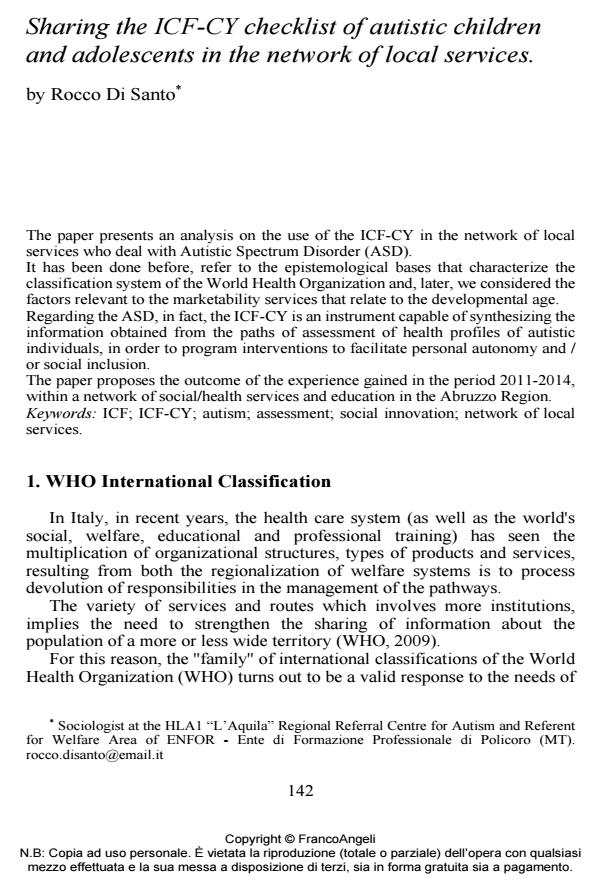Sharing the ICF-CY checklist of autistic children and adolescents in the network of local services.
Journal title SALUTE E SOCIETÀ
Author/s Rocco Di Santo
Publishing Year 2015 Issue 2015/1EN
Language English Pages 10 P. 142-151 File size 76 KB
DOI 10.3280/SES2015-001011EN
DOI is like a bar code for intellectual property: to have more infomation
click here
Below, you can see the article first page
If you want to buy this article in PDF format, you can do it, following the instructions to buy download credits

FrancoAngeli is member of Publishers International Linking Association, Inc (PILA), a not-for-profit association which run the CrossRef service enabling links to and from online scholarly content.
Technological innovation, medical progress, demographic change, increased chronicity and new health risks are some factors that need and require a change towards new models of health care. The contribution is intended to describe a project defined as "socially innovative", which relates to Cognitive Rehabilitation, an initiative to support families and patients with memory problems and Alzheimer's Neuro center of the Mediterranean Pozzilli, Isernia. The specialists of the health facility Molise triggered several editions of the "Cognitive Rehabilitation in patients with memory disorders and Group Psychotherapy for family" for those who live this experience in the first person and for those who are next as a caregiver or simply as members of the family. The analysis of this best practice has been investigated from the methodological point of view through a survey of qualitative in-depth interviews with patients and family members involved in this project, in order to highlight how this initiative has brought an innovation and a positive change, oriented towards new models of health care.
Keywords: Health, social innovation, dementia.
Rocco Di Santo, Sharing the ICF-CY checklist of autistic children and adolescents in the network of local services. in "SALUTE E SOCIETÀ" 1EN/2015, pp 142-151, DOI: 10.3280/SES2015-001011EN